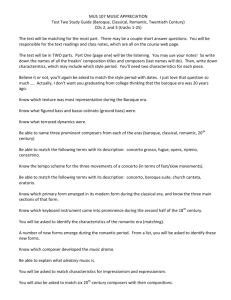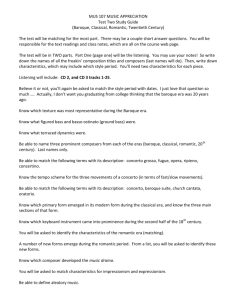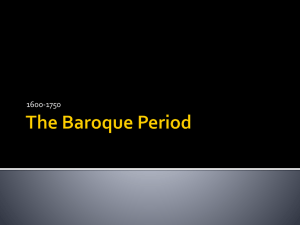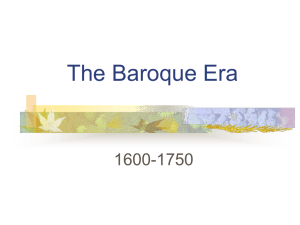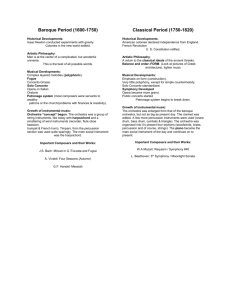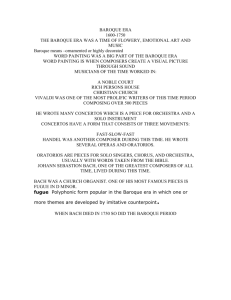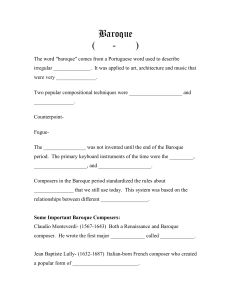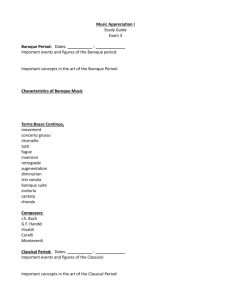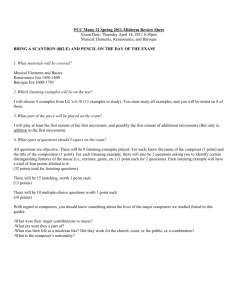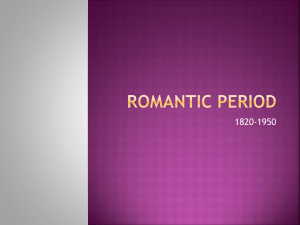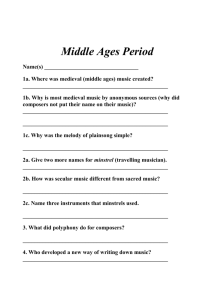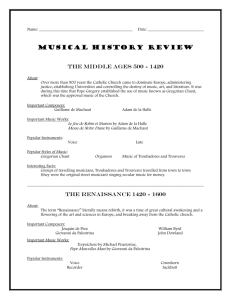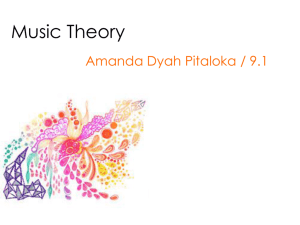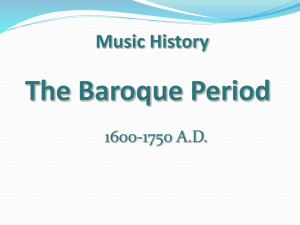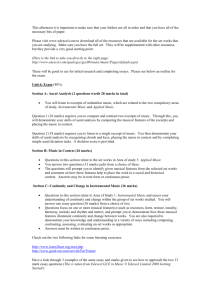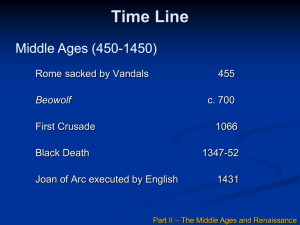doc
advertisement
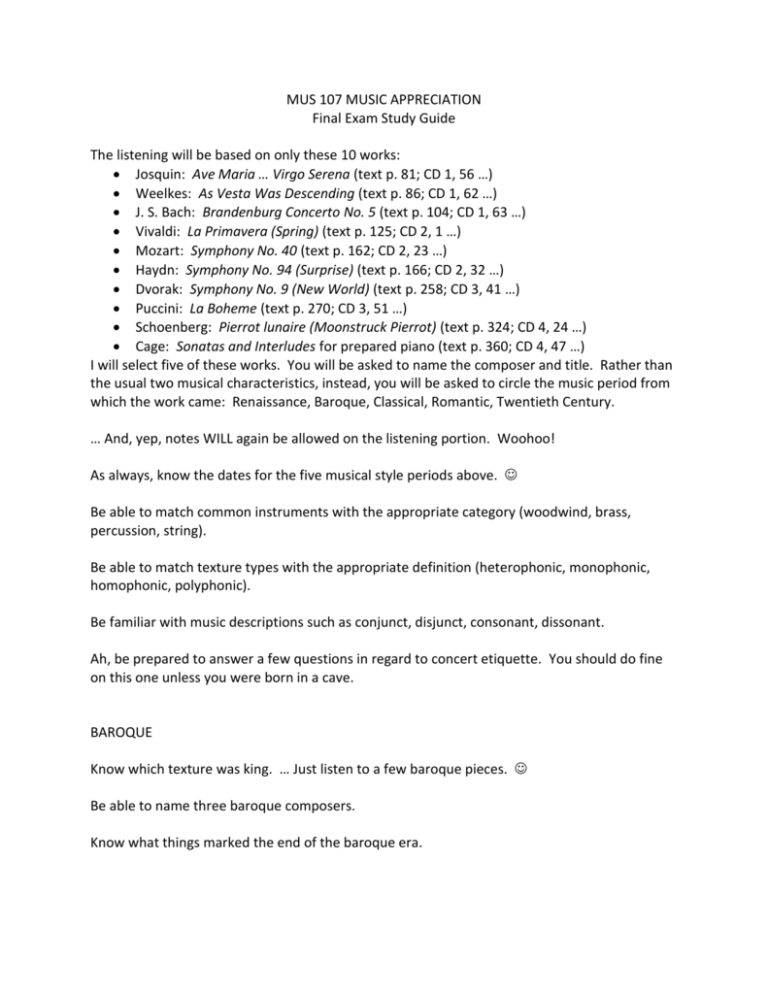
MUS 107 MUSIC APPRECIATION Final Exam Study Guide The listening will be based on only these 10 works: Josquin: Ave Maria … Virgo Serena (text p. 81; CD 1, 56 …) Weelkes: As Vesta Was Descending (text p. 86; CD 1, 62 …) J. S. Bach: Brandenburg Concerto No. 5 (text p. 104; CD 1, 63 …) Vivaldi: La Primavera (Spring) (text p. 125; CD 2, 1 …) Mozart: Symphony No. 40 (text p. 162; CD 2, 23 …) Haydn: Symphony No. 94 (Surprise) (text p. 166; CD 2, 32 …) Dvorak: Symphony No. 9 (New World) (text p. 258; CD 3, 41 …) Puccini: La Boheme (text p. 270; CD 3, 51 …) Schoenberg: Pierrot lunaire (Moonstruck Pierrot) (text p. 324; CD 4, 24 …) Cage: Sonatas and Interludes for prepared piano (text p. 360; CD 4, 47 …) I will select five of these works. You will be asked to name the composer and title. Rather than the usual two musical characteristics, instead, you will be asked to circle the music period from which the work came: Renaissance, Baroque, Classical, Romantic, Twentieth Century. … And, yep, notes WILL again be allowed on the listening portion. Woohoo! As always, know the dates for the five musical style periods above. Be able to match common instruments with the appropriate category (woodwind, brass, percussion, string). Be able to match texture types with the appropriate definition (heterophonic, monophonic, homophonic, polyphonic). Be familiar with music descriptions such as conjunct, disjunct, consonant, dissonant. Ah, be prepared to answer a few questions in regard to concert etiquette. You should do fine on this one unless you were born in a cave. BAROQUE Know which texture was king. … Just listen to a few baroque pieces. Be able to name three baroque composers. Know what things marked the end of the baroque era. Be able to match concerto, baroque suite, church cantata & oratorio with appropriate descriptions. CLASSICAL Know which primary “form” emerged during this era and is still thriving today. Know the three main sections of this form. Be able to name three classical composers. ROMANTIC Be able to name three romantic-era composers. Be able to identify characteristics/descriptions associated with music of the romantic era. TWENTIETH CENTURY Be able to name three twentieth-century composers. Be able to match descriptions of the following twentieth-century music types: impressionism, expressionism, neoromanticism, neoclassicism. WORLD MUSIC Be able to match the following terms with the appropriate description: membranophone, idiophone, aerophone, chordophone. In regard to Ghanaian drumming, know what is “really” happening in what otherwise appears to be a percussion concert. Be generally familiar with “throat singers” and their primary locations. Be familiar with the characteristics of the pentatonic scale, used in the music of many countries that were studied. Be familiar with the Indian raga. Know how most Indians obtain the latest Top 40 hits. Ah, the Gamelan Orchestra. Listen to a tune or two, and you’ll be able to answer this question.
